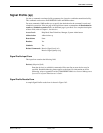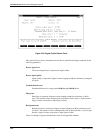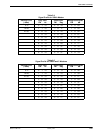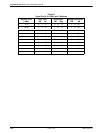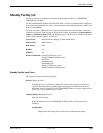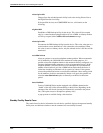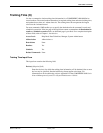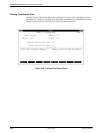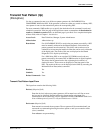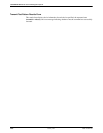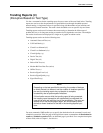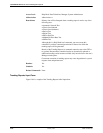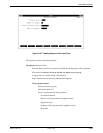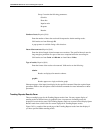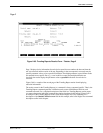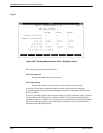
2Modem/DSU Commands
2-2096800-A2-GB31-20 January 1997
Trending Reports (tr)
(Disruptive Based on Test Type)
Use the tr command to obtain a trending report for one or more of the tests listed below. Trending
reports are used to review the performance of specified devices through scheduled repeated
network testing. A single network test is specified, along with the number of test iterations and
time intervals between iterations. The trend is then scheduled to run on specific days and times.
Trending reports can be used for intense short-term testing to determine the failure rates of
problem devices, or for long-term testing to examine device degradation over time. The multiple
test results of each trend are displayed as a single set of graphic or tabular results.
Trending reports can be run for the following tests:
• Automatic Network Test (ant)
• Call Fault Read (cfr)
• Circuit Loss Inbound (cli)
• Circuit Loss Outbound (clo)
• Circuit Quality (cq)
• Device Test (det)
• Digital Test (dit)
• End-to-End Test (eet)
• Modem Bit Error Rate Test (mbert)
• Offline Test (ot)
• Receive Signal Level (rsl)
• Receive Signal Quality (rsq)
• Signal Profile (sp)
NOTE
Depending on the test specified for trending, the number of devices
to which the test is to be sent, and the number of iterations specified
per test, the trending report may not be able to complete
successfully due to system space limitations.
If this situation occurs while the trending report is being executed,
the trending report transaction will automatically be canceled; the
user will be sent mail notifying him of the cancellation. The user can
attempt to run the trending report again, but should specify fewer
devices or fewer iterations of the test in the trending reports input
form.
For most commands, NMS enables you to specify the destination for the command’s results and
schedule its execution. If the last page of the input form cannot accommodate the Destination for
results and Schedule execution fields, an additional page is provided. For a complete description
of these fields, refer to Chapter 1, Introduction.



